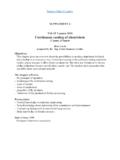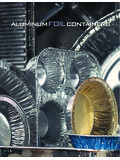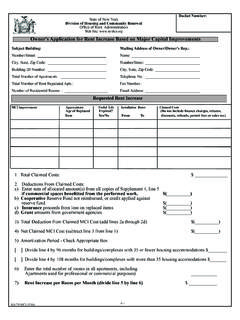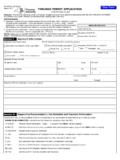Transcription of SUPPLEMENT 1 TALAT Lecture 1100.01 Aluminium - …
1 SUPPLEMENT 1 TALAT Lecture - A Light MetalA Brief Introduction to Aluminium10 pages, 10 fi guresBasic Levelprepared by Toralf Cock, Skanaluminium, OsloObjectives:- This chapter is an introduction to the course on Aluminium as a design material. The goal is:To provide basic information about:- the history of Aluminium - the principles behind the production of primary metal- environmental properties- potential applications- areas of applicationPrerequisites: The Lecture is recommended for those situations, where a brief, general background information about Aluminium is needed as an introduction of other subject areas of Aluminium application technologies.
2 This Lecture is part of the self-contained course Aluminium in Product Development which is treated under TALAT lectures 2100. It was originally developed by Skanaluminium, Oslo, and is reproduced for TALAT with kind permission of SkanAluminium. The translation from Norwegian into English was funded within the TALAT of Issue: 1999 EAA - European Aluminium AssociationReturn to Table of ContentsTALAT Aluminium - A Light MetalProduction of Primary 2 Aluminium and the Environment .. 3 Potential 4 Areas of application.
3 7 The Outlook for Aluminium 9 List of 10 Production of Primary MetalAluminium comprises eight per cent of the earth's crust. Since Aluminium occurs inextremely stable oxygen compounds, it took quite some time for scientists to figure outhow to reduce it into pure metal. That process was first accomplished in 1824 in thelaboratory of rsted of Denmark. Some small-scale commercial production wasachieved, but even five decades later Aluminium remained more costly and coveted breakthrough came in 1886.
4 Independently of each other, the American Hall and the French scientist H roult invented the electrolytic reductionprocess for producing Aluminium . The method is based on alumina derived frombauxite. Although improvements have been made in the process over the past century,the industrial production of Aluminium is essentially based on the same process today(see Figure ).aluTraining in Alum inium Application TechnologiesAl(I)+Al(I)+2 kg Al2 O31 kg Al4 kg Bauxite2 kg AluminaAlumina ProductionMeltingAlloys and Casting(Al2 O3 )SiloAl2 O3 GasScrubberCryolite BathSteel PotCarbon CathodeCarbon Anode:- Production from BauxiteTALAT about 1918, the Norwegian scientist C.
5 W. S derberg invented a continuouselectrode, the "S derberg cell", which is still in use today. Most modern electrolyticreduction plants now use pre-baked electrodes for environmental production has increased rapidly in recent years, rising from a modest 5,700tonnes per year at the turn of the century to the current level of about 25 million tonnesannually (see Figure ). Aluminium consumption has increased dramaticallyduring the past 40 years in particular. According to forecasts, growth is expected tocontinue at a rate of 2-3 per cent per year until the year in Aluminium Application Aluminium production 1950 till 1998 World Aluminium production 1950 till 1998 (primary + secondary)EuropeEastern EuropeAsiaAustraliaAfricaAmerica199825 mill.
6 Tonnes40%19% (Norden 5%)24%6%8%3% mill. tonnes2%2%9%46%21%20% mill. tonnes15%67%2%16% Aluminium and the EnvironmentThe Aluminium industry has invested enormous resources in reducing emissions fromtheir production plants. Pollution has been slashed by nearly 80 per cent during the past20 years, and today's modern electrolytic reduction plants represent minimalenvironmental problems. We must not forget, however, that there are still plants,especially older ones, which do not satisfy today's environmental production of primary Aluminium is highly energy-intensive.
7 Roughly 12 - 14 kWhare required to produce one kg of pure Aluminium using the electrolytic reductionprocess. Please note, however, that the metal's melting point (approx. 660 C) is so lowthat re-melting requires only about five per cent of the original energy input. This meansthat efficient Aluminium re-cycling is power is used to produce more than 50 per cent of primary Aluminium . Inactual fact, this is a means of storing and exporting energy to countries where energyproduction is possible only through the combustion of fossil fuels.
8 This is important interms of the global lends itself well to recycling and recycled metal currently accounts for aboutone-third of world Aluminium consumption (Figure ). Due to growingvolumes of used Aluminium , increasing environmental awareness and new technologies,we expect the amount of recycled Aluminium to increase dramatically in the years in Aluminium Application Production from Scrap RecyclingPotential Applications(Figures - )The rapid growth in the consumption of Aluminium is primarily due to the amazingversatility of the metal: Aluminium is ductile.
9 The metal can be hot rolled or cold rolled down to thicknessesof 6-7 m (foil). It can be extruded down to wall thicknesses of mm. It can also bepressed, drawn, forged, stamped or cast by traditional is corrosion resistant and its surface can be further protected fromcorrosion by anodising, painting or can be joined by most well-known joining methods, including welding,soldering, gluing and riveting. Extruding offers special advantages for shapeadjustments such as pockets for screws, snap-fit covers, tensile strength of Aluminium can be varied from 70 to 700 MPa, depending on thealloying elements added and the process.
10 Its ductility and strength can be alteredTALAT the working process to give the material the desired degree of strength. Ifaluminium is used in structural components that are subject to stress or bending,however, it must be borne in mind that the metal's rigidity (modulus of elasticity) is notaltered significantly by alloying or hardening. It will always remain about one-third thatof steel (E = 70 GPa).aluTraining in Aluminium App lication TechnologiesCorrosionresistantEasy to shapeEasy to joinApplications Based on Useful Aluminium Properties (1) is light-weight.









